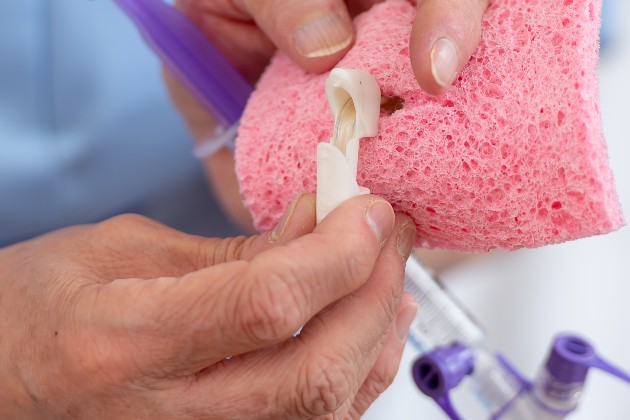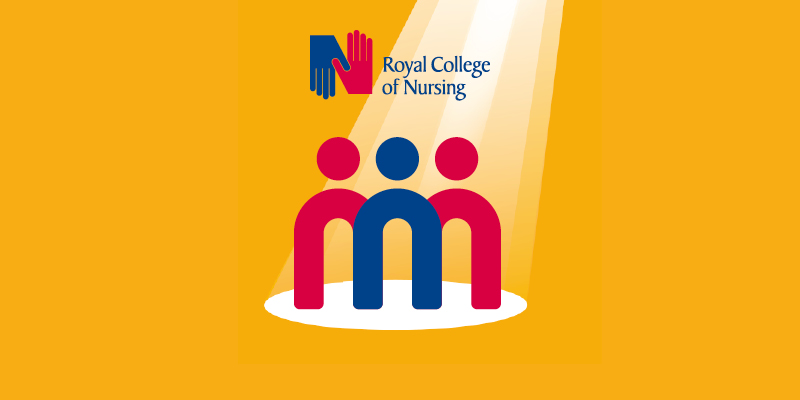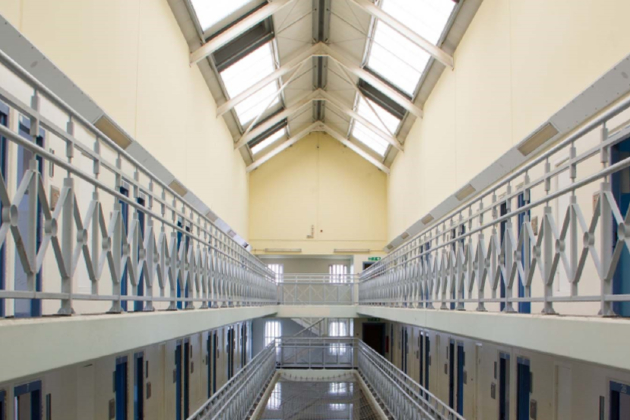“Your next patient could use a feeding tube so having some knowledge could help them feel more comfortable about talking openly to you about it,” Ilva says.
Ilva Jones's long career in health care dates back 22 years but since 2008 she’s worked as a band 4 enteral nutrition technician.
She’s now an expert in her role and central to her trust’s team of nutrition nursing staff. She doesn’t work with nasogastric tubes but is the first point of call when trouble-shooting issues with other feeding tubes – investigating blockages, checking sites and managing dressings.
She also teaches patients and carers about the daily maintenance of feeding tubes on a one-to-one basis. “I teach clinical staff too,” she says.
“I work with them in small groups, sometimes on study days, and cover good cleaning regimes, what to do if tubes get blocked or fall out, and how to carry out ‘advance and rotate’ procedures.”(See below.)
I want to be there for those who are struggling
When she’s not carrying out clinical or teaching work, Ilva books appointments, deals with patient queries and works on audits and patient satisfaction surveys.
“I can honestly say that there’s no part of my job I dislike,” she says. “But I particularly enjoy being able to spend time with patients who’ve been on the ward for a number of weeks. I want to be there for those who are struggling.
"Some people I work with have had feeding tubes for years, but for some, it’s all new to them. I make sure I build a rapport with these patients and provide advice, reassurance and support if they’re worried.”
Ilva explains
What is enteral nutrition?
It’s a way of feeding that uses the gastrointestinal tract to deliver some or all of a person's calorific requirements using specially prepared liquid feeds. It’s sometimes used alongside a normal oral diet.
When might enteral feeding be needed?
Patients might need this kind of feeding when they have swallowing problems or there’s a risk that food and fluid can go down the wrong way. The muscles involved in chewing and swallowing can become weak, slow and uncoordinated as a result of many different conditions such as a stroke, head injury, multiple sclerosis (MS), motor neurone disease (MND), or surgery to the head and neck.
What types of feeding tubes are available?
There are several feeding tubes available. A nasogastric tube is a tube passed through the nose and down into the stomach, designed for short-term use. A percutaneous endoscopic gastrostomy (PEG) tube is implanted directly into the stomach. These are designed for long-term use and last several months or sometimes years before they need replacing. Other tubes include balloon retained gastrostomy tubes (BGT), jejunostomy tubes and nasojejunal tubes.
What are the benefits of enteral feeding to patients?
It’s essential to ensure patients receive nutrition and hydration when illness or disease prevents them from eating and drinking normally. Patients who find it difficult to swallow can get distressed so enteral feeding can also remove the anxiety that often accompanies meals. Patients may also have an improved sense of wellbeing as their energy levels increase.
What is ‘advance and rotate’?
This is a technique used with PEG tubes. There’s a small disc inside the stomach to prevent the tube falling out. You hold the end of the tube and rotate it in a complete circle, pushing the tube a few centimetres into the stomach and pulling it back to the original position. This should be carried out at least once a week to stop the stomach lining growing over the disc, which can cause buried bumper syndrome.








